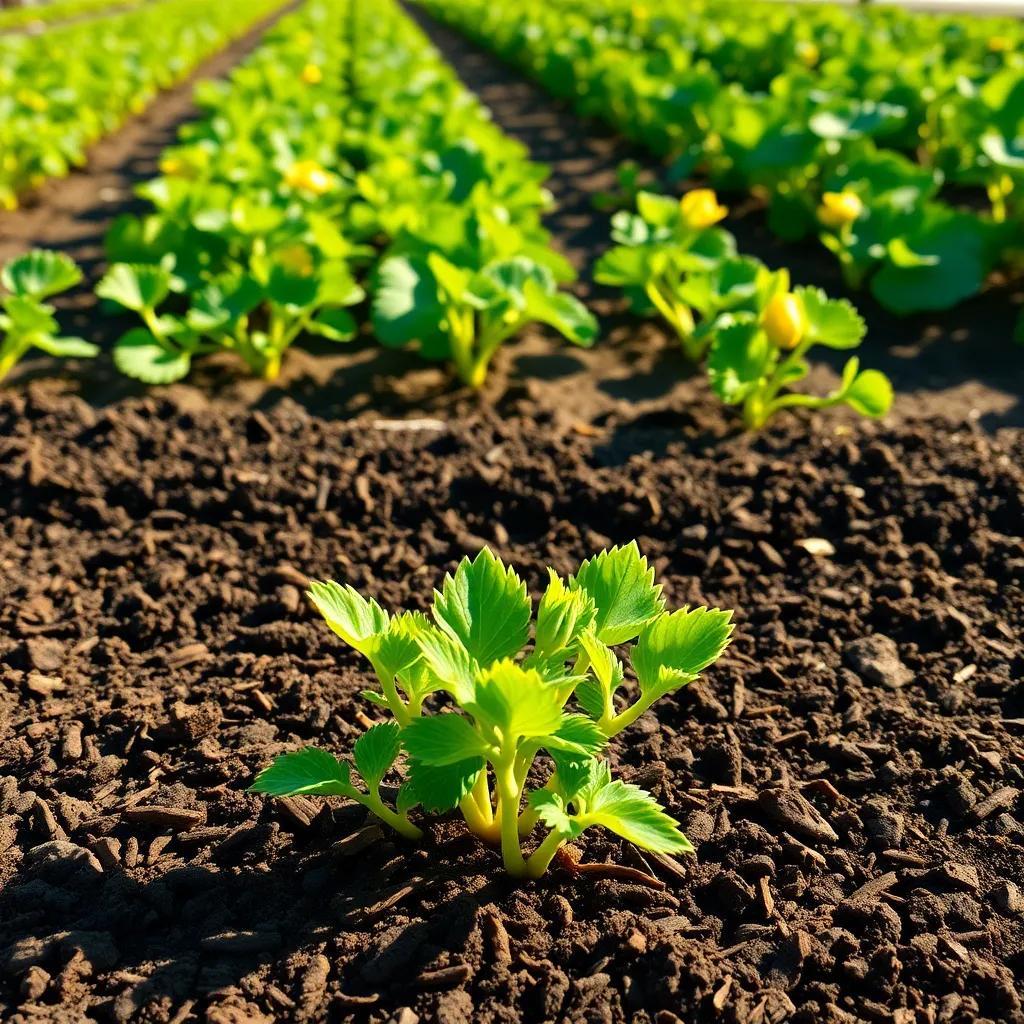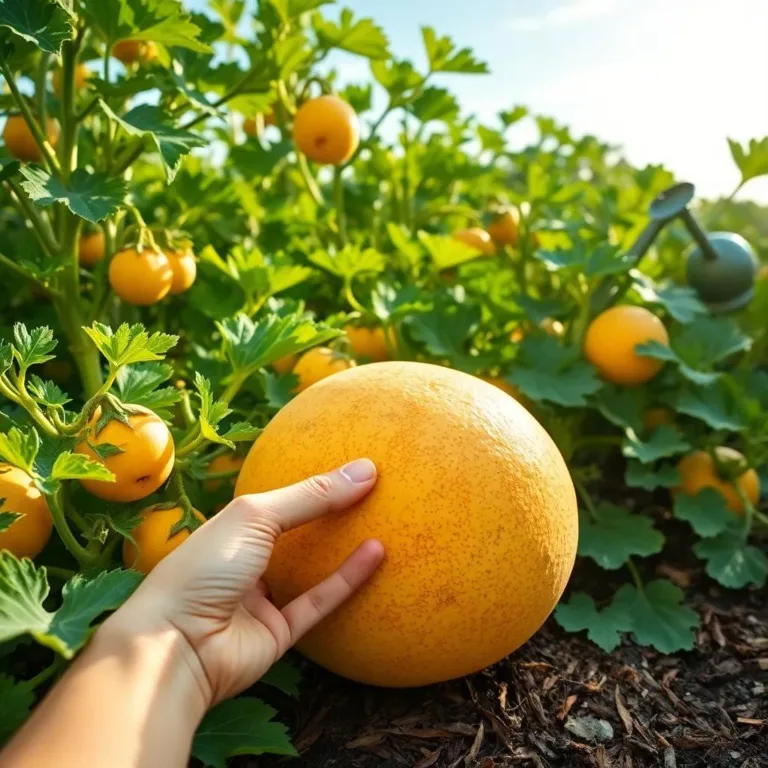Are you ready to grow your very own cantaloupes? I’ve got all the juicy details you need to turn those tiny seeds into sweet, delicious melons! Whether you’re a gardening pro or just starting out, this guide is packed with fun tips and tricks to help you nurture your cantaloupes from seed to harvest. Let’s dig in!
Choosing the Right Cantaloupe Seeds for Optimal Growth
When it comes to growing cantaloupes, the first step is picking the right seeds! There are so many varieties out there, and each one brings its own special flavor and characteristics. So, how do you pick the best one? Let’s break it down!
- Climate Compatibility: First, I always check which seeds are best for my climate. Some cantaloupes love the heat while others prefer milder temps. Look for seeds labeled for your growing zone. This ensures your plants will thrive where you live!
- Varietal Flavor and Texture: Next, think about how you want your cantaloupes to taste. Do you like them sweet and juicy or would you prefer a firmer texture? Some popular varieties include:
– Hale’s Best Jumbo: Known for its sweetness and vibrant orange flesh.
– Sugar Cube: Perfect for small spaces and offers a super sweet flavor.
– Athena: A bit more robust and great for fresh slicing!
- Organic or Heirloom Seeds: Have you ever thought about using organic or heirloom seeds? These options are often free from synthetic pesticides and GMOs, making them a healthier pick. Plus, they support sustainability!
- Read the Labels: Always check that little seed packet. It has vital info! Look for details about:
– Days to maturity: This tells you how long it’ll take before harvesting.
– Disease resistance: Some seeds are tougher against common diseases.
Choosing the right seeds is exciting! It’s like picking a favorite flavor of ice cream—one that you will be proud to grow! So, take your time, do your research, and get ready to plant!
Preparing Soil and Planting Cantaloupe Seeds
Now that you’ve picked your seeds, it’s time to prepare the soil and plant them! This is where the magic starts. Cantaloupes love rich, well-draining soil, so let’s get our hands dirty!
- Soil Preparation: Start by testing your soil’s pH. Cantaloupes prefer a pH of 6.0 to 6.8. You can make your soil healthier by adding compost or organic matter. This not only improves drainage but also adds nutrients to help your plants grow big and strong!
- Finding the Perfect Spot: Next, choose a sunny location in your garden. Cantaloupes are sun worshippers! They need at least 6 to 8 hours of sunlight each day. So, make sure they get their dose of sunshine!
- Sowing the Seeds: When planting, dig small holes about 1 inch deep. Space those holes 2 to 3 feet apart. This gives your little plants enough room to grow without getting too crowded. I usually plant 2 to 3 seeds in each hole for a better chance of sprouting. Cover them up with soil and give them a little pat, like tucking them into bed!
- Watering Well: After planting, it’s time to water! Give the soil a good soak, but avoid overwatering—nobody likes soggy feet! A gentle stream of water helps the seeds settle in nicely.
- Mulching: I love to finish up with a layer of organic mulch around the seedlings. This helps retain moisture and keeps those pesky weeds away.
Now that you have your seeds planted in the soil, it’s time to relax and wait for them to sprout. Taking care of your cantaloupes prepares you for the sweet rewards ahead! Happy planting!

Watering and Fertilizing Cantaloupe Plants
Now that your cantaloupes are happily growing, it’s time to talk about watering and fertilizing! These two things are like the secret sauce that helps your plants thrive and produce delicious fruit!
Watering Tips
- Keep it Consistent: Cantaloupes love moisture, so I always try to water them deeply and regularly. Aim for about 1 inch of water per week. If it’s super hot outside, you might need to increase that a bit.
- Watering Technique: I find that watering at the base of the plants works best. This way, the leaves stay dry, which helps prevent nasty diseases. A drip irrigation system is a great investment for this!
- Check the Soil: To know when to water, stick your finger in the soil up to the first knuckle. If it feels dry, it’s time for a drink!
Fertilizing Tips
- Before Planting: Before I plant my seeds, I mix a balanced organic fertilizer into the soil. This gives the plants a healthy start!
- Mid-Season Boost: Once the plants start growing fruit, I like to give them a side-dress with a nitrogen-rich fertilizer. This really helps the plants focus their energy on growing those sweet cantaloupes!
- Compost Matters: Don’t forget about compost! I love adding well-composted material around the plants. It releases nutrients slowly and helps retain moisture.
Watering and fertilizing are not just chores—they’re ways to show love to your cantaloupe plants! By keeping them hydrated and nourished, you’ll be rewarded with a bountiful harvest!
Managing Weeds and Pests in Your Cantaloupe Garden
Keeping a cantaloupe garden healthy means being on the lookout for weeds and pests. These pesky invaders can steal vital nutrients and cause havoc if not managed! Let’s take a look at some fun and effective ways to keep your garden thriving.
Weeding Strategies
- Regular Inspections: I always take a stroll through my garden to check for sneaky weeds. Catching them early makes it easier to pull them out by hand or use a hoe!
- Mulch It Up: I love using a layer of organic mulch around my cantaloupe plants. It not only helps retain moisture but also smothers those pesky weeds. It’s like a cozy blanket for the soil!
Pest Prevention
- Row Covers: I often use lightweight row covers to protect my plants from pests like aphids and cucumber beetles. They’re simple to set up and can really help.
- Natural Predators: Invite beneficial insects into your garden. Ladybugs and lacewings are excellent for munching on harmful pests. It’s like having a tiny army of protectors!
Keeping Pests at Bay
If I spot pests despite my best efforts, I quickly take action. There are plenty of organic pest control methods available, such as:
- Insecticidal Soap: This is a great option for soft-bodied insects like aphids. Just spray it directly on them!
- Neem Oil: This oil comes from the neem tree and works wonders against a variety of pests. I mix it with water and spray it on affected plants.
By managing weeds and pests effectively, I can keep my cantaloupe plants healthy and happy. Remember, a little prevention goes a long way!
Tips for Harvesting Ripe Cantaloupes Effectively
Ah, the moment we’ve all been waiting for—harvesting those juicy cantaloupes! After all the hard work, it’s time to enjoy the sweet rewards of our gardening efforts. Here are some fun tips to make harvesting a breeze!
Signs of Ripe Cantaloupes
- Skin Color: When your cantaloupes start showing a golden hue on the bottom, that’s a good sign they’re getting close to ripe. The skin should also have a slight sheen!
- Nose Test: Give the melons a sniff near the stem end. If they emit a sweet aroma, it’s time to pick them!
- Touch Test: Gently press the blossom end of the cantaloupe. If it gives a little, then it’s ripe and ready to come off the vine.
Harvesting Technique
- Use a Sharp Tool: When it’s time to harvest, grab some garden shears or a sharp knife. Cut the fruit from the vine, leaving a small stem attached. This helps prevent damage!
- Timing is Key: I usually like to harvest my cantaloupes in the morning when it’s cooler. This helps keep them fresh longer!
Post-Harvest Tips
- Ripening at Home: If you happen to pick a melon that’s not quite ripe, don’t worry! Just leave it at room temperature to ripen. To speed up the process, place it in a paper bag with a ripe banana or apple!
- Storage: Store your perfectly ripe cantaloupes in the fridge for up to a week. They’re great for snacking, adding to salads, or blending into smoothies!
With these tips, harvesting cantaloupes will be an exciting and rewarding adventure. Grab those melons and enjoy the fruits of your labor! Happy harvesting!

